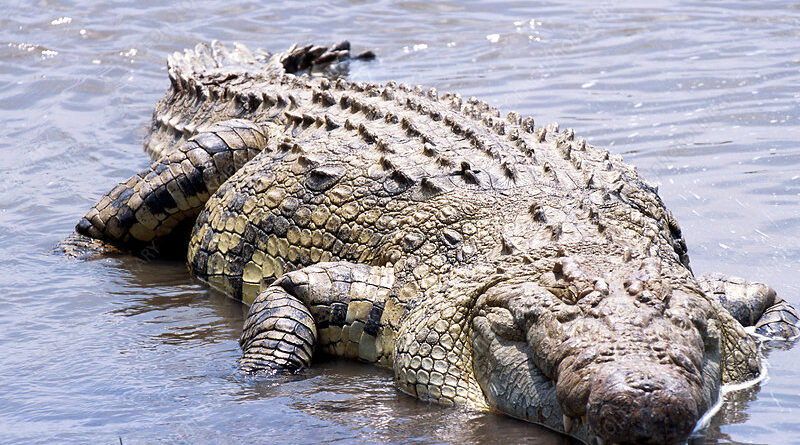Nile Crocodile Threats to Survival
Nile Crocodile Threats to Survival The Nile crocodile (Crocodylus niloticus), one of the largest reptiles in the world, plays a crucial role in maintaining the health of its ecosystem. Found across a range of habitats in Africa, these ancient creatures are apex predators, helping to regulate populations of various species. However, despite their resilience, Nile crocodiles face numerous threats that jeopardize their survival. This article delves into the various challenges they encounter and the ongoing efforts to ensure their continued existence.
Natural Threats
A. Habitat Loss
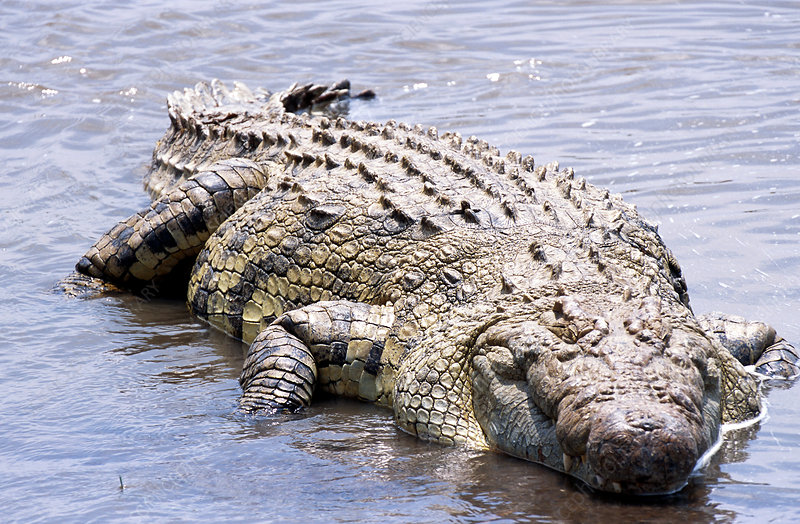
Nile crocodiles inhabit wetlands, rivers, and lakes, where they thrive in warm, shallow waters. However, natural events such as droughts and floods, exacerbated by climate change, have significantly impacted these habitats. Droughts can reduce water availability, leading to habitat shrinkage, while floods can disrupt nesting sites. These changes affect not only the crocodiles but also the entire ecosystem reliant on these water bodies.
B. Predation
While adult Nile crocodiles are formidable predators, juvenile crocodiles are vulnerable to predation from birds, large fish, and even other crocodiles. This natural predation is a part of the ecosystem, but it poses a significant risk to young crocodiles, limiting their chances of reaching adulthood.
Here’s a table summarizing the key threats to the Nile crocodile’s survival, along with potential conservation strategies:
| Threats to Survival | Description | Conservation Strategies |
|---|---|---|
| Natural Threats | ||
| Habitat Loss | Climate change causing droughts and floods leading to habitat reduction. | Habitat restoration and rehabilitation efforts. |
| Predation | Young crocodiles vulnerable to natural predators. | Monitoring populations and habitat protection. |
| Human-Induced Threats | ||
| Habitat Destruction | Urbanization and agriculture destroying wetlands and water sources. | Implementing sustainable land-use practices. |
| Hunting and Poaching | Illegal hunting for skin and meat reduces populations. | Strengthening anti-poaching laws and enforcement. |
| Conflict with Humans | Human encroachment leads to crocodile attacks on livestock. | Community engagement and education on crocodile importance. |
| Conservation Status | ||
| Population Trends | Varying population numbers across regions; some areas declining. | Ongoing research and monitoring of populations. |
| Legal Protections | Existing laws but inconsistent enforcement across regions. | Advocacy for stronger protections and community involvement. |
This table organizes the threats and conservation strategies for Nile crocodiles, providing a clear and concise overview of the challenges and solutions related to their survival.
Human-Induced Threats
A. Habitat Destruction
Human activities have significantly contributed to the decline of Nile crocodile populations. Urbanization and agricultural expansion often lead to the destruction of wetlands and other natural habitats. Additionally, pollution from industrial activities contaminates water sources, making them uninhabitable for crocodiles and other wildlife.
B. Hunting and Poaching
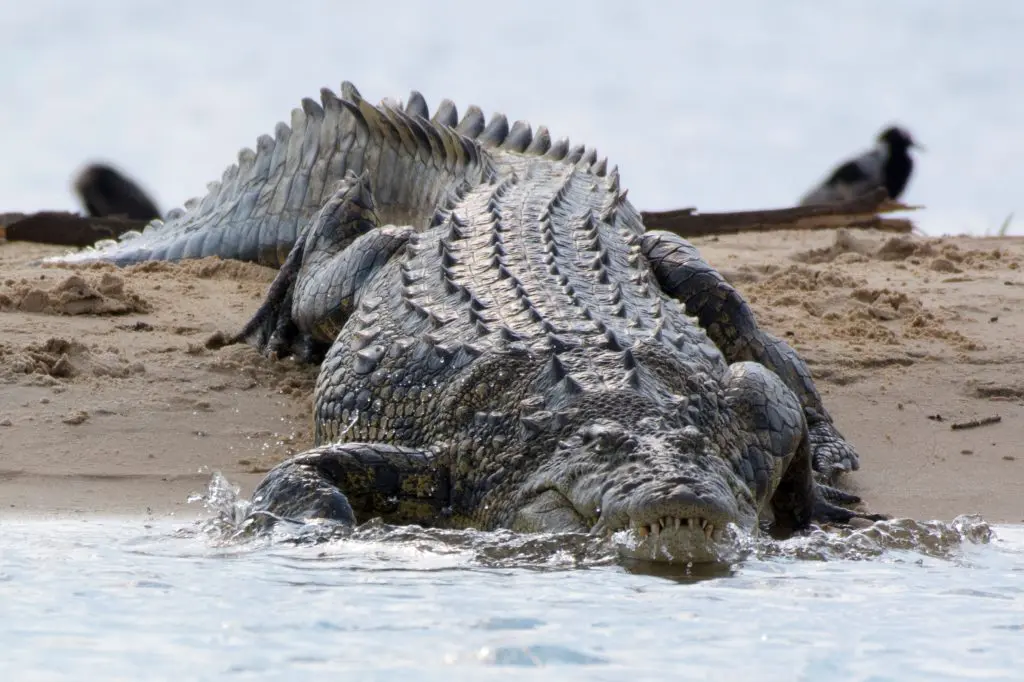
Nile crocodiles are hunted for their skin, which is highly valued in the fashion industry, and for their meat. Poaching remains a significant threat, driven by the demand for crocodile products and traditional medicine in some cultures. This illegal hunting not only reduces crocodile populations but also disrupts the balance of the ecosystems they inhabit.
C. Conflict with Humans
As human populations expand and encroach upon crocodile habitats, conflicts become inevitable. Incidents of crocodile attacks on livestock and humans often lead to retaliation against these reptiles. In many areas, crocodiles are killed to protect livestock or as a response to attacks, further diminishing their populations.
Conservation Status
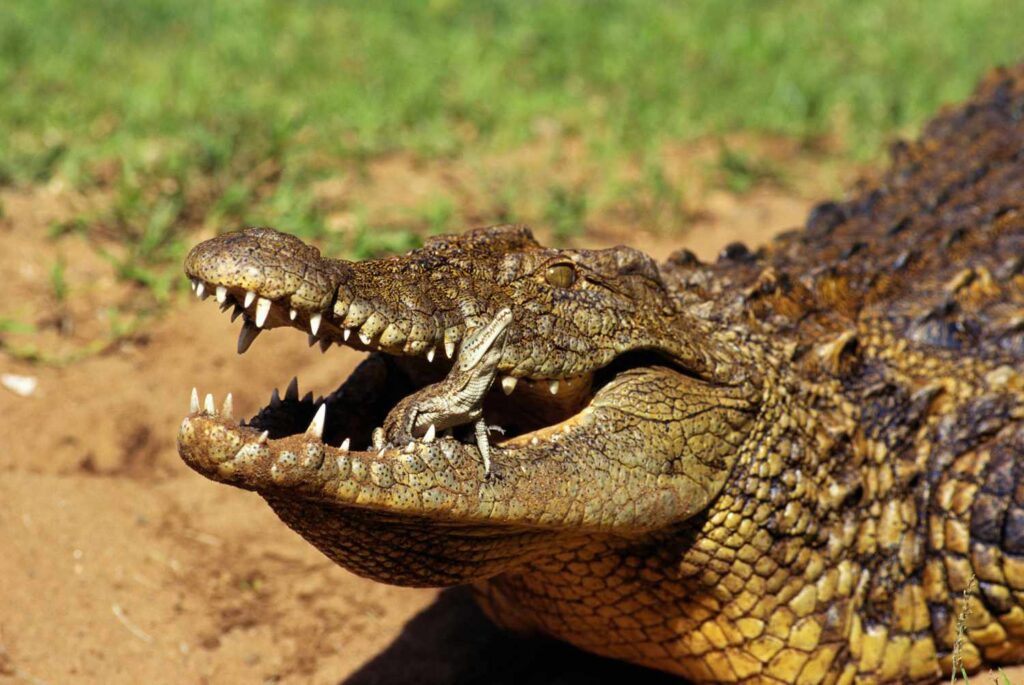
Nile crocodiles are currently listed as “Least Concern” by the International Union for Conservation of Nature (IUCN), but their populations vary significantly across different regions. Some areas have seen population declines due to the aforementioned threats, while others have stable or increasing numbers due to successful conservation efforts. Legal protections exist in many countries, but enforcement varies widely.
Conservation Strategies
A. Habitat Restoration
Restoring and rehabilitating wetlands and river systems is essential for supporting Nile crocodile populations. Implementing sustainable land-use practices can help mitigate the impact of agriculture and urban development on their habitats. Efforts to restore natural water flows and protect critical nesting sites are vital for the crocodile’s survival.
B. Anti-Poaching Initiatives
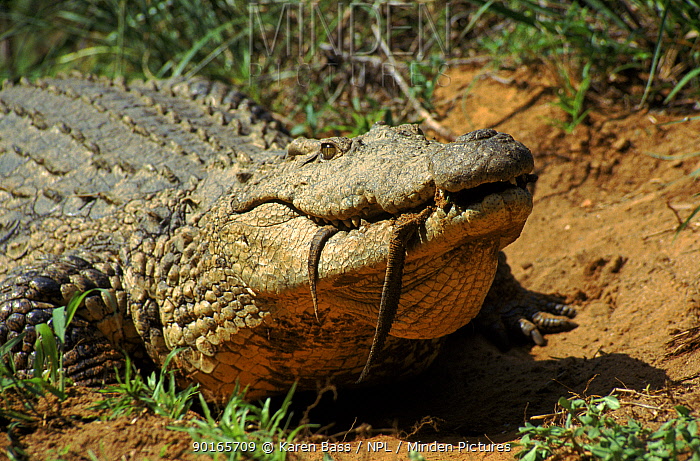
Strengthening law enforcement to combat poaching is crucial in protecting Nile crocodiles. Community engagement and education about the ecological importance of crocodiles can foster a sense of stewardship among local populations. Incentivizing sustainable practices can also reduce reliance on illegal hunting.
C. Research and Monitoring
Ongoing research is necessary to understand the population dynamics and health of Nile crocodiles. Tracking their movements, breeding patterns, and habitat use can inform conservation strategies. Ecological research also highlights the importance of preserving the broader ecosystem in which these reptiles thrive.
Conclusion
The Nile crocodile faces multiple threats to its survival, both natural and human-induced. Addressing these challenges requires a multifaceted approach, including habitat restoration, anti-poaching initiatives, and research. Raising awareness about the ecological significance of Nile crocodiles and the need for their protection is crucial for ensuring their survival. By taking collective action, we can help preserve these magnificent creatures and the ecosystems they inhabit for generations to come.
References
- International Union for Conservation of Nature (IUCN) Red List
- Various ecological and wildlife conservation studies
- Reports from organizations involved in crocodile conservation efforts
This article serves as a comprehensive overview of the threats facing Nile crocodiles and the efforts needed to protect them, highlighting the importance of conservation in maintaining biodiversity and ecosystem health.
Here are some tips for promoting the survival of Nile crocodiles and supporting conservation efforts:
Tips for Supporting Nile Crocodile Conservation
Educate Yourself and Others:
- Learn about the ecological role of Nile crocodiles and the challenges they face.
- Share knowledge with friends, family, and your community to raise awareness.
Support Conservation Organizations:
- Donate to or volunteer with organizations focused on Nile crocodile conservation and habitat restoration.
- Participate in local or global conservation campaigns to help protect their habitats.
Practice Sustainable Tourism:
- If visiting areas where Nile crocodiles are found, choose eco-friendly tours that respect wildlife and their habitats.
- Avoid disturbing nesting sites or habitats while observing wildlife.
Reduce Plastic Use:
- Minimize plastic consumption to help reduce pollution in waterways that affect crocodiles and their habitats.
- Participate in clean-up efforts in local rivers, lakes, and wetlands.
Advocate for Stronger Protections:
- Contact local representatives to advocate for laws and policies that protect crocodile habitats and prevent illegal hunting.
- Support initiatives aimed at habitat restoration and conservation.
Promote Sustainable Practices:
- Encourage sustainable agricultural and land-use practices that minimize habitat destruction.
- Support businesses that prioritize environmental sustainability.
Report Illegal Activities:
- If you witness poaching or habitat destruction, report it to local authorities or wildlife protection organizations.
- Encourage others to do the same to help combat illegal activities.
Participate in Citizen Science:
- Get involved in citizen science projects that monitor crocodile populations and their habitats.
- Help collect data on sightings, nests, and environmental conditions to support research efforts.
Encourage Community Engagement:
- Foster local community initiatives focused on crocodile conservation and habitat protection.
- Organize or participate in educational workshops about the importance of crocodiles in the ecosystem.
Promote Responsible Fishing Practices:
- Advocate for fishing regulations that protect crocodile habitats and prevent bycatch.
- Educate fishermen about the ecological importance of crocodiles and the need to avoid harmful practices.
FAQs about Nile Crocodile Conservation
What is the Nile crocodile?
- Answer: The Nile crocodile (Crocodylus niloticus) is a large reptile found in various freshwater habitats across Africa. It is one of the largest crocodilian species and plays a crucial role as an apex predator in its ecosystem.
Why are Nile crocodiles important to the ecosystem?
- Answer: Nile crocodiles help regulate populations of various prey species, maintaining a balance in the ecosystem. They also contribute to nutrient cycling in aquatic environments through their hunting and scavenging activities.
What are the main threats to Nile crocodiles?
- Answer: Key threats include habitat loss due to urbanization and agriculture, illegal hunting and poaching, conflicts with humans, and natural challenges such as climate change affecting their habitats.
What is being done to protect Nile crocodiles?
- Answer: Conservation efforts include habitat restoration, anti-poaching initiatives, legal protections, and community engagement programs. Various organizations work to raise awareness and support sustainable practices.
How can individuals help in Nile crocodile conservation?
- Answer: Individuals can help by educating themselves and others, supporting conservation organizations, participating in eco-friendly tourism, reporting illegal activities, and advocating for stronger protections.
Are Nile crocodiles endangered?
- Answer: Currently, Nile crocodiles are classified as “Least Concern” by the International Union for Conservation of Nature (IUCN), but their populations vary across regions. Some areas face significant declines due to threats.
What role does climate change play in the survival of Nile crocodiles?
- Answer: Climate change leads to habitat alteration, such as changes in water levels and temperature, which can affect nesting sites and food availability, ultimately threatening their survival.
Can Nile crocodiles be kept as pets?
- Answer: Keeping Nile crocodiles as pets is illegal in many places due to their size, strength, and specific habitat needs. They require specialized care and conditions that are difficult to replicate in a domestic environment.
How do conservationists monitor Nile crocodile populations?
- Answer: Conservationists use various methods, including satellite tracking, field surveys, and community reporting, to monitor populations, assess their health, and understand their habitat use.
What can I do if I encounter a Nile crocodile in the wild?
- Answer: If you encounter a Nile crocodile, maintain a safe distance and do not approach it. Avoid disturbing the animal, especially if it is nesting. Always follow local guidelines for wildlife encounters.
